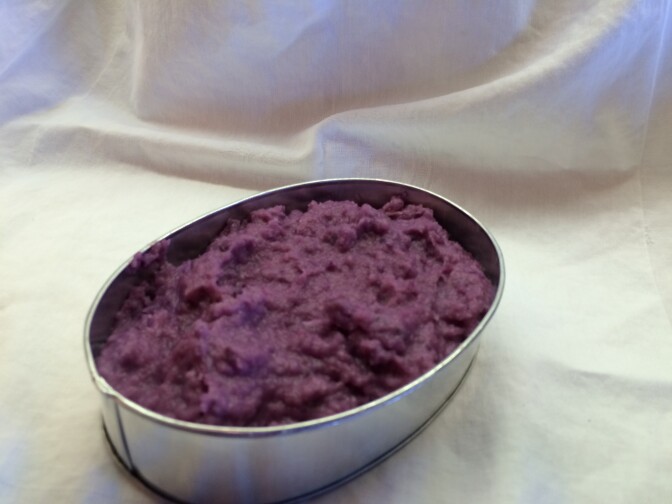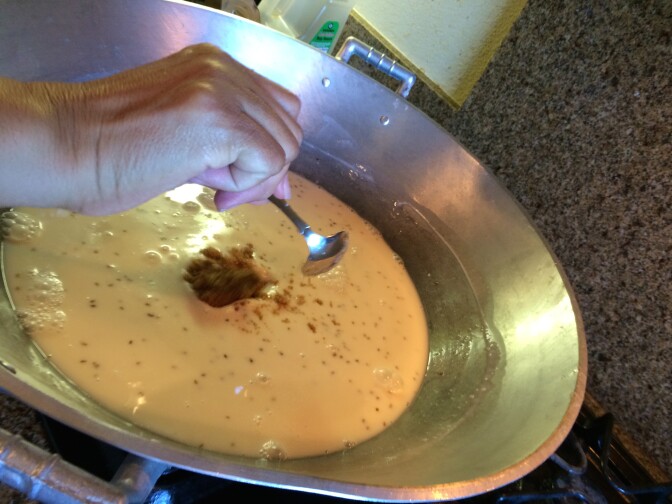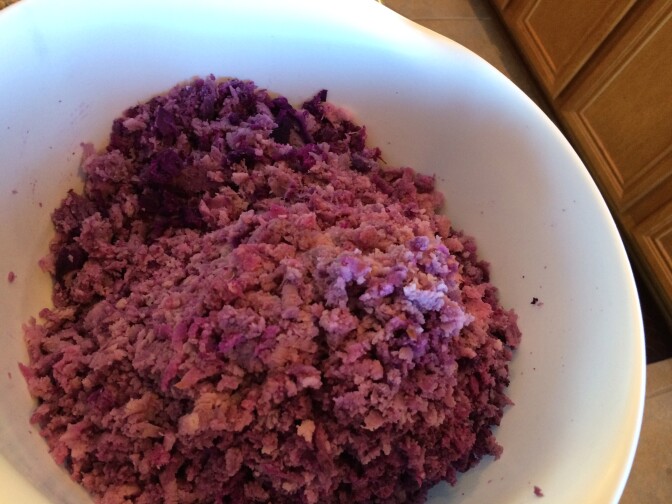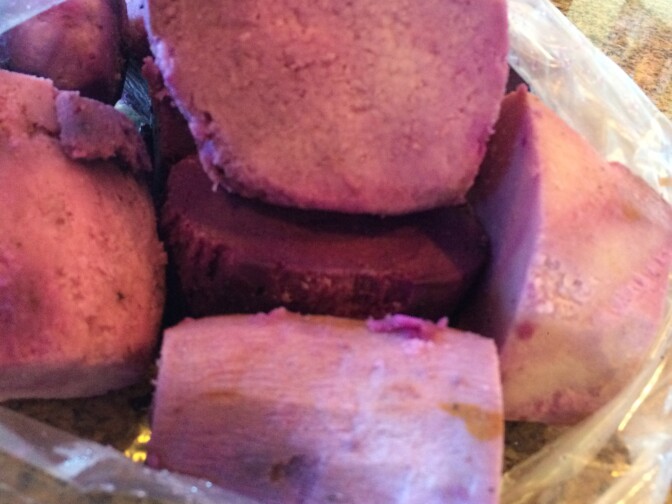Take Two translates the day’s headlines for Southern California, making sense of the news and cultural events that affect our lives. Produced by Southern California Public Radio and broadcast from October 2012 – June 2021. Hosted by A Martinez.
Ube halaya: the holiday purple yam dessert from the Philippines
We brief you on what you need to know about L.A. today.
Listen
5:22
Ube halaya: the holiday purple yam dessert from the Philippines
It’s New Year's Eve, which means there's still time for the rush of holiday food dishes. And we’re talking about more than just that traditional fruitcake and glass of eggnog.
Take, for instance, the traditional Filipino dessert called ube halaya. The purple yam, or ube, is the basis for a variety of dishes in the Philippines, both sweet and savory. The thick, coconut-flavored ube halaya, is a favorite during the holidays for Filipino families. It's right up there with crispy pork lechon and boisterous karaoke singing.
This version of the holiday dish comes from guest chef, Corazon Collera, and Take Two's Dorian Merina.
Corazon's Holiday Ube Halaya Recipe
Ingredients:
5-6 medium sized ube (purple yam)
4 C of fresh or canned coconut milk
2 C of sweetened condensed milk
2-3 tsp of anise seeds
Steps:
1. Peel the ube and boil until soft, but not mushy. Let cool, then finely grate into a large mixing bowl. Set aside.
2. Over low flame in a large wok, stir in the coconut milk and sweetened condensed milk. Stir constantly.
3. Add the anise seeds to taste.
4. Stir in the grated ube. Continue stirring until mixture is thick and begins to cling to side of pan. Remove from heat before it begins to clump.
5. Transfer to pie tin or serving dish. Enjoy while still warm or allow to cool. Either way, it's masarap (delicious)!
*Can also add more coconut milk and less condensed milk for a more savory version.






